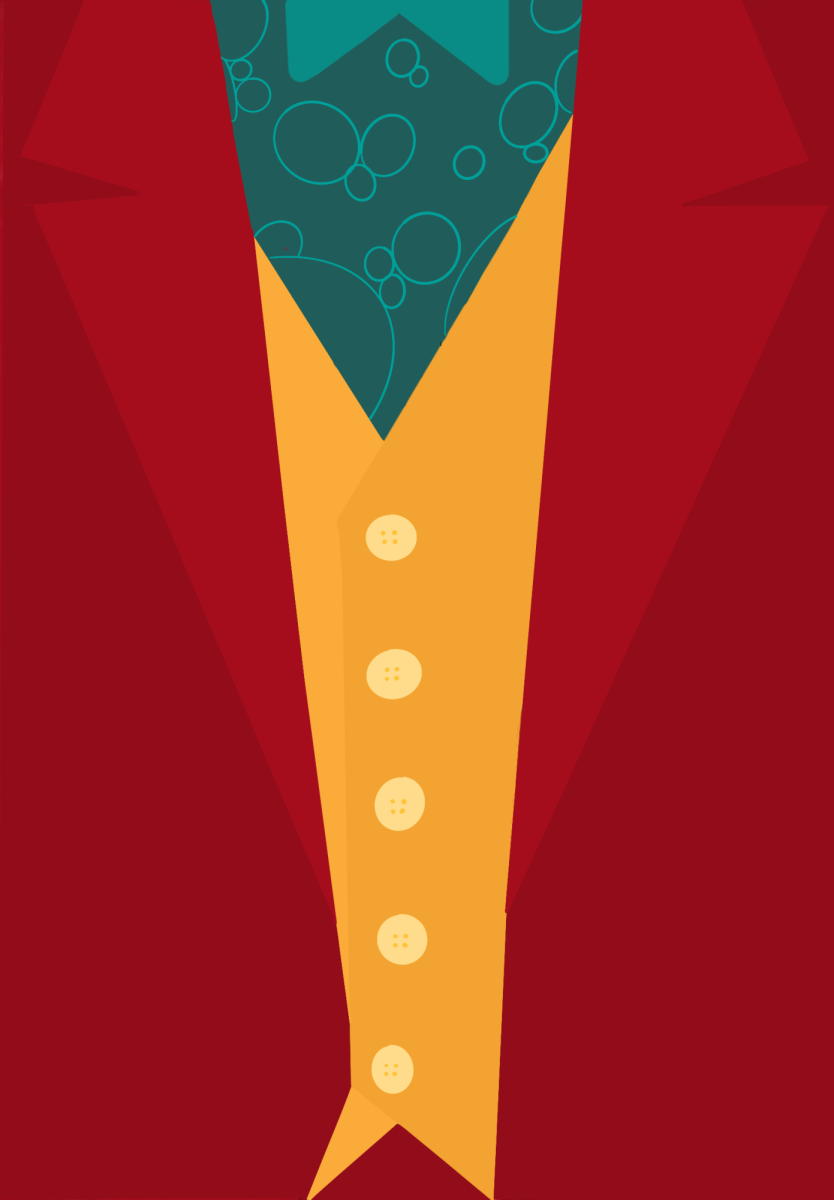Movies like “Joker: Folie à Deux” have never stood out to me as I’m buying a theater ticket, but I wanted to see the musical spin on this version so I went into it with little expectations. Two worlds were colliding, and I wanted to see if they exploded into fireworks or into a bomb.
At first when I left the theater I thought I was the only one who felt an overcast of discontentment and overstimulation. Since I didn’t know much about super villain movies prior, I assumed my experience was based on a lack of interest and missing knowledge of how the movie was supposed to be. I quickly realized I wasn’t alone in my opinion.
Turns out, “Joker: Folie à Deux,” starring Joaquin Phoenix and Lady Gaga, was a disappointment not only to myself, but also at the box office, significantly underachieving initial expectations. The film faced criticism from audiences and critics—quite a contrast to the overwhelming success of the first “Joker” in 2019.

Unfortunately, “Joker: Folie à Deux” feels like an aimless exercise in style and a shallow viewpoint, more focused on its own audacity than on delivering any meaningful plot. Watching the movie felt like an uncanny dream that you are just waiting to wake up from.
The film opens after a vintage Warner Bros. logo with a cartoon short, “Me and My Shadow,” animated by Sylvain Chomet. It’s supposed to foreshadow the events of the film while also revealing to the audience that our main character, Arthur Fleck, suffers from dissociative identity disorder. The short ends, and we see that Arthur is an inmate at Arkham State Hospital, and the film leaves us uncertain about which perspective to trust. Is he a misunderstood victim with a mental health disorder, as his sympathetic lawyer (Catherine Keener) later presents in court? Or is he a manipulative sociopath, as the district attorney argues?
I loved how the cartoon foreshadowed the plot of the movie and I found myself reflecting on it a lot while watching. It acted as almost a guide post, especially with the random bursts of musical performances throughout the film, but it also made me question my own thoughts and interpretations, not necessarily in a good way.
Director Todd Phillips made a bold choice by casting pop icon Lady Gaga alongside Phoenix and incorporating live musical performances. Gaga and Phoenix’s talents as character performers help make scenes somewhat enjoyable, even though the whole movie views like a fever dream. The film features a jukebox soundtrack with well-known songs spanning from 1940s Broadway to 1970s pop. However, I found that Phillips struggles to meet the ambitious standards he sets for himself, often falling short.
While “Folie à Deux” is not the first musical to explore song-and-dance sequences as manifestations of a delusional mind, it heavily emphasizes this idea. Throughout the film, emotional moments are expressed through gruffy renditions of pop hits, often interrupted by an orchestra that seems almost invisible to the other characters. Most performances lack vocal expertise, with Phoenix’s half-spoken singing feeling more suited for karaoke than Broadway. The cast, specifically Gaga, acknowledged that neither character is a professional singer and even argued that their less polished performances make sense in context. However, this choice leads to a dullness where the songs blur together, overshadowing the story’s progression.
The story itself lags, with minimal action between musical numbers. Towards the middle of the movie I was simply ready for it to be over. Arthur goes to trial and faces the bleakness of his cell each night, while familiar faces from the previous film make brief appearances. Although a shocking act of violence occurs during the trial, the overall plot feels fragmented and lacking momentum, resembling fan fiction rather than a cohesive film.
The structure might not resonate well with dedicated Joker fans, who may be confused by a sequel that lacks typical superhero elements like fight scenes or villainous suspenseful moments. I was left questioning whether the events are real or merely in the characters’ minds, which is an intriguing concept but struggled to sustain my interest for nearly two hours and 20 minutes.
Despite the exploration of their disturbed psyches, little is revealed about their motivations. Something I did know about the stereo-typical relationship between Harley Quinn and the Joker before going into the movie is that in previous movies they had been a team. In this version of the movie however, it felt as if both their motivations were toxic and manipulative. Arthur remains a “poor little clown,” while Gaga’s character, Lee, is so poorly developed that her true nature—whether vulnerable or manipulative—remains ambiguous.
At the end, Phillips seems to close the door on any possibility of future sequels. This may be a relief for both the filmmaker and the audience, as “Folie à Deux” feels like a muddled, heavy-handed film made by someone who appears to hold both his characters and his viewers in disappointment.




